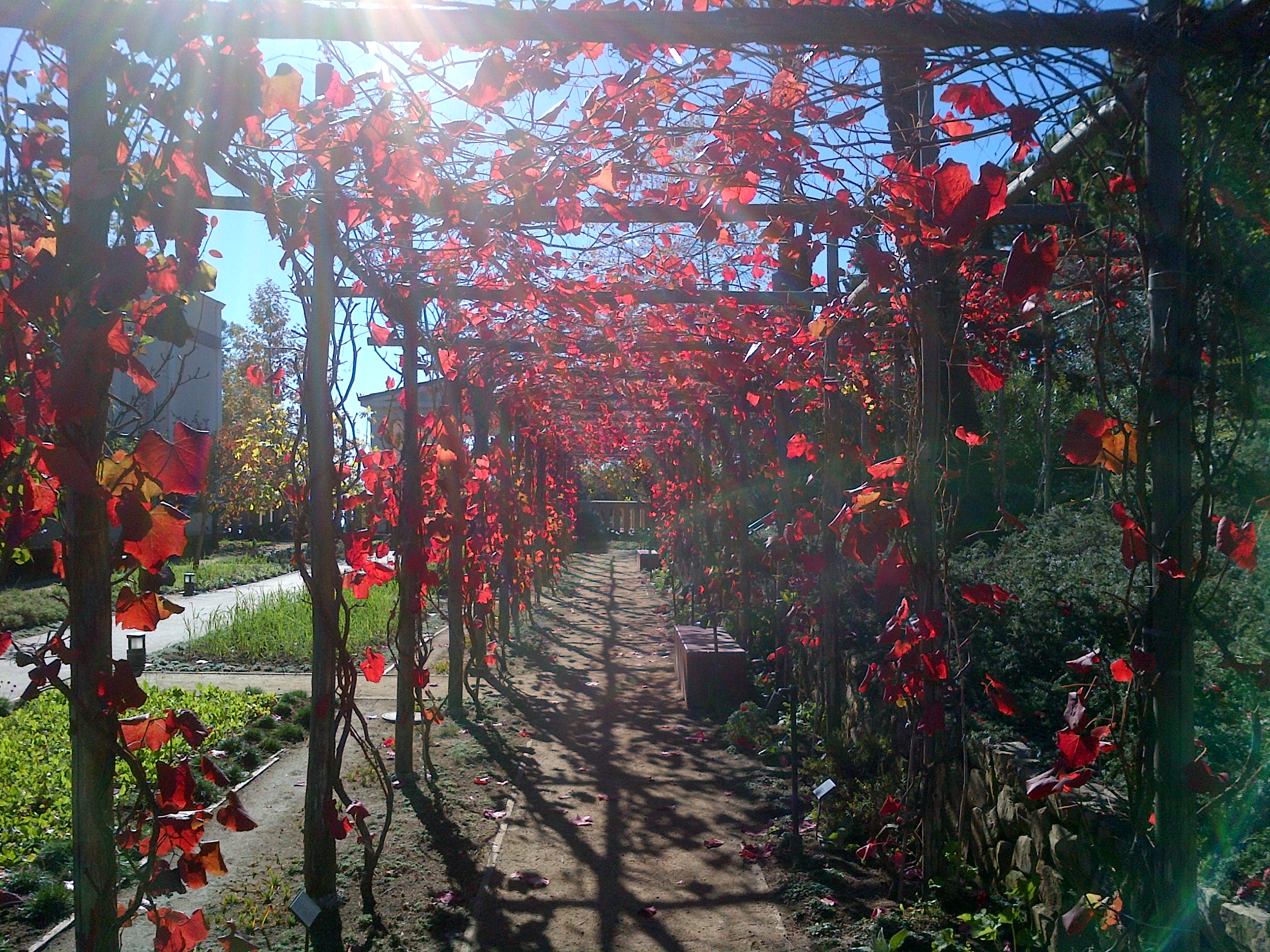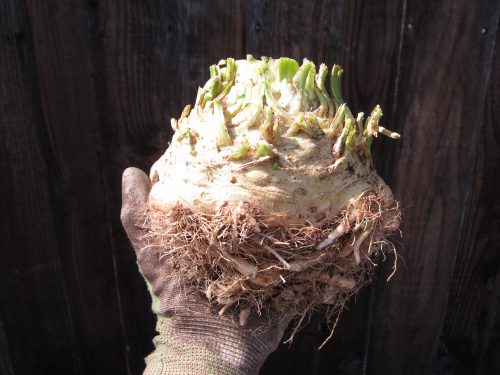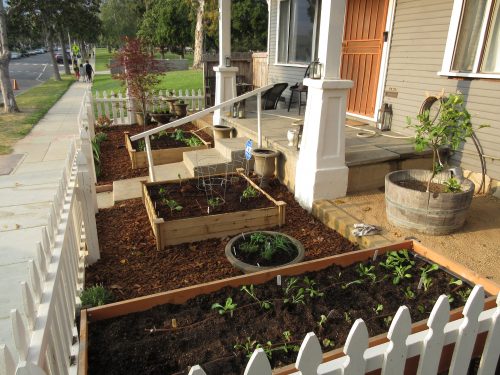After a glorious morning hike overlooking the ocean, Gardenerd’s Senior Strategy Officer (aka husband) and I took a drive down Pacific Coast Highway to see if we could get in to the Getty Villa for a scenic bite to eat at their patio cafe. What luck! The gate guard was giving away tickets.
But before we could reach the cafe, we spied a short line for a garden tour, about to start in moments. How could we resist? We grabbed our standard-issue headset and began wandering the property.
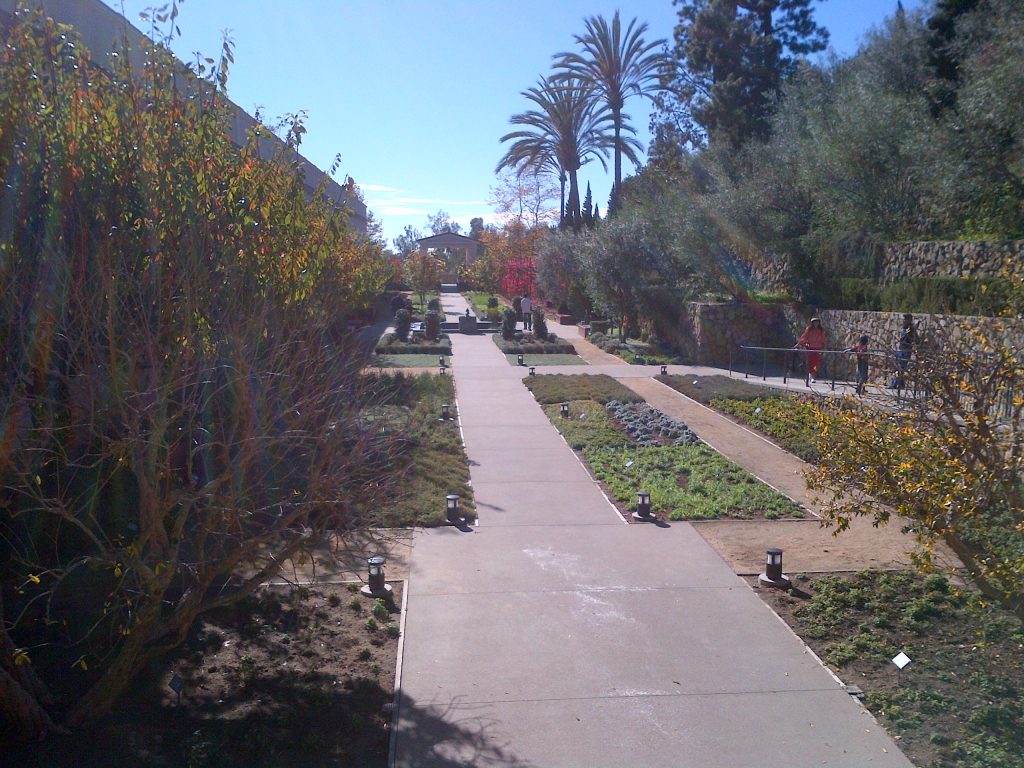
First stop: The Herb Garden, where culinary herbs and fruit trees lay neatly manicured as far as the eye can see. Everything planted in the garden has historical significance and has been traced back to use by the ancient Romans and Greeks. Laurel Bay, pomegranate, peach, olive and pear trees all appear in ancient works of art.
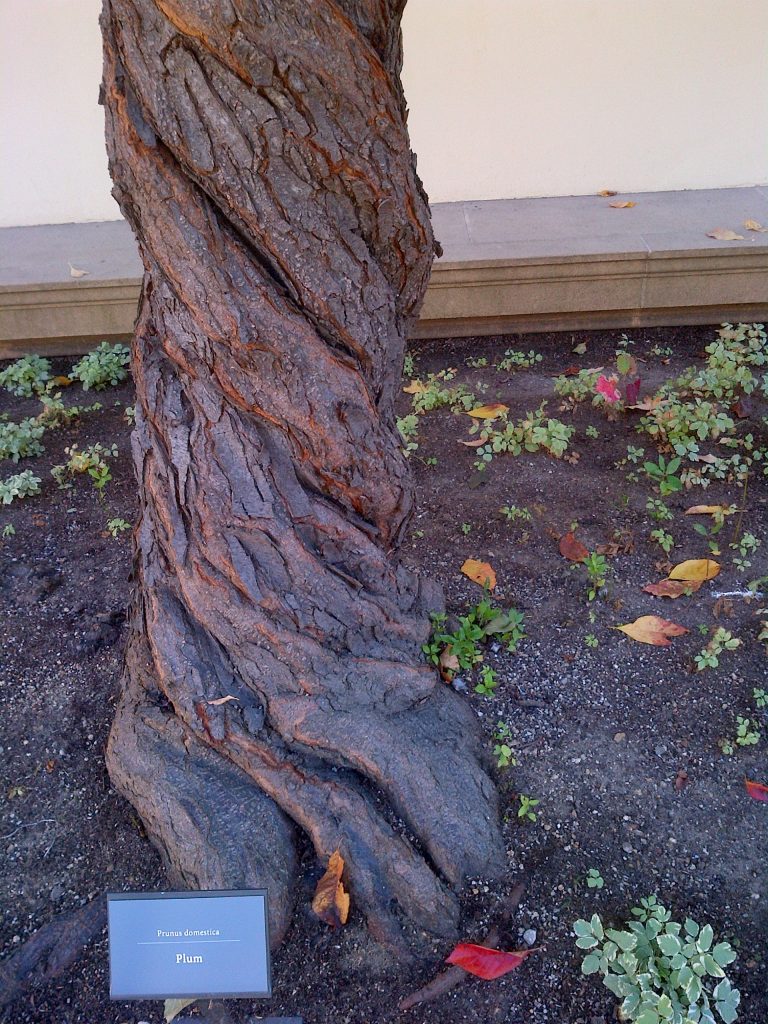
What amazing textures all around, including this plum tree (or trees, wound together) that have twisted trunks. The garden features a beautiful grape arbor, turned russet in the fall (see – we do have seasonal color here in Los Angeles!)
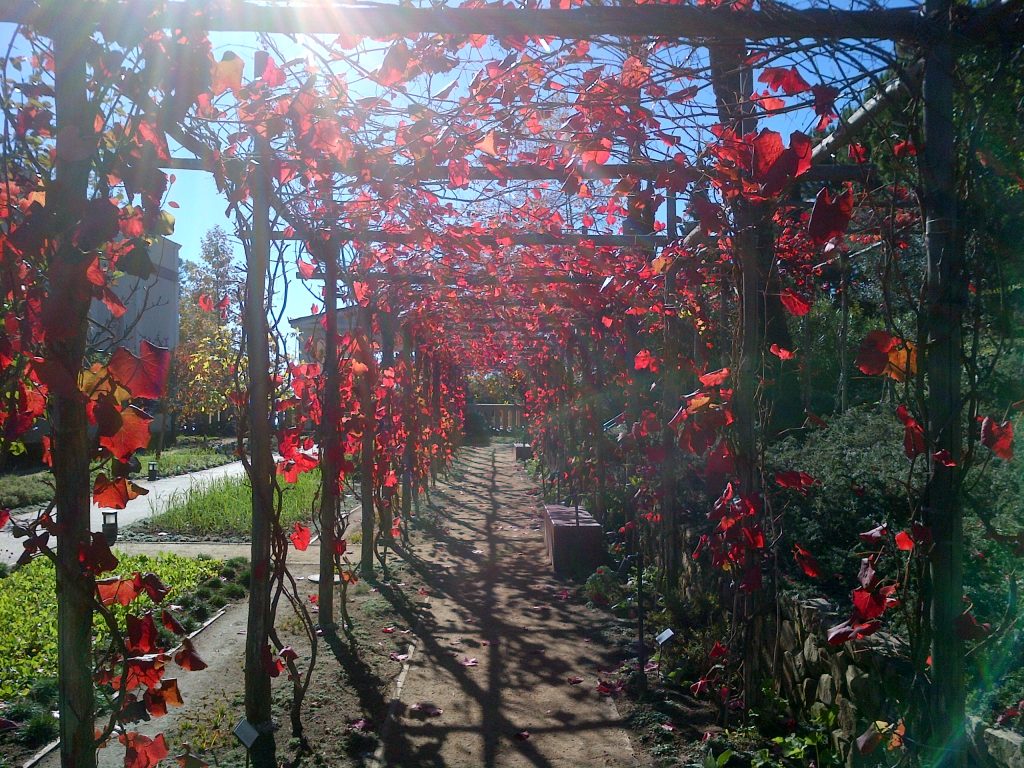
The garden beds are filled with herbs (hence the name) including lavender, rosemary, thyme and this unusual relative of oregano and marjoram.
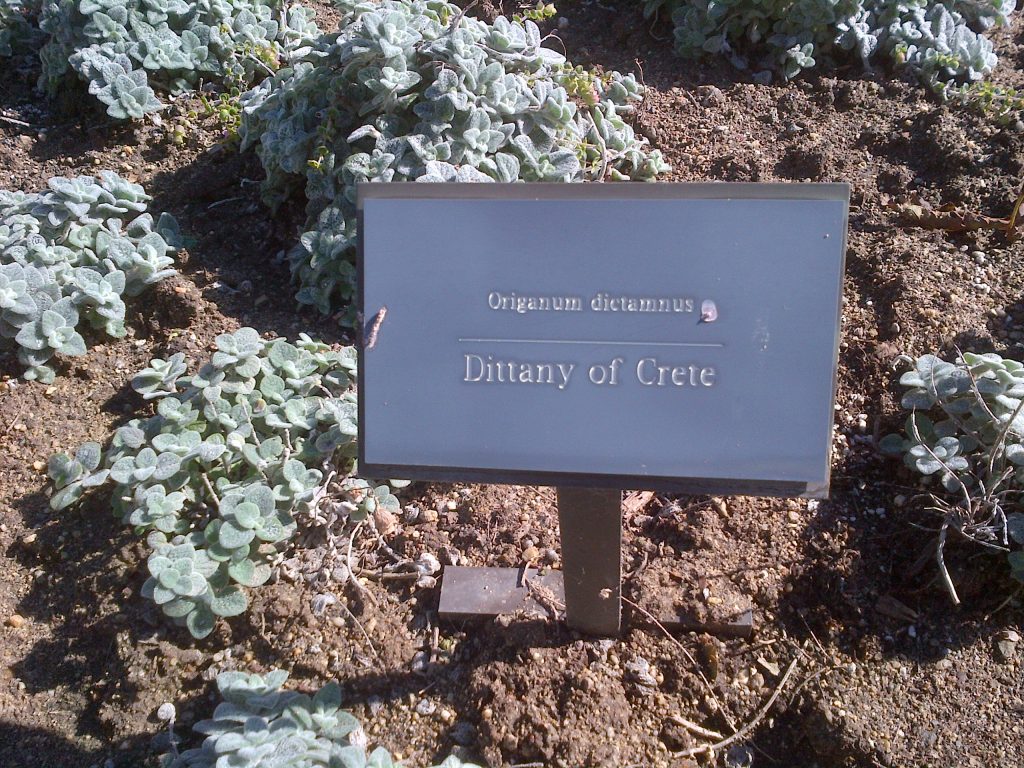
According to The Herb Gardener, “Dittany is one of the most commonly reference historical herbs for healing. Closely related to marjoram and oregano, dittany has the distinctive oval oregano leaf shape, with hairy leaves and small pink to lavender flowers. Dittany of Crete is sometimes confused with false dittany (Dictamnus alba L.), which is also used in herbal healing.”
Our journey led us to other gardens, with long pools and bronze statues. The entire Getty Villa is a replica of the Villa dei Papiri in Herculaneum (current day Ercolano), Italy, demonstrating what the place would have looked like were it not destroyed by the eruption of Mount Vesuvius in A.D. 79.
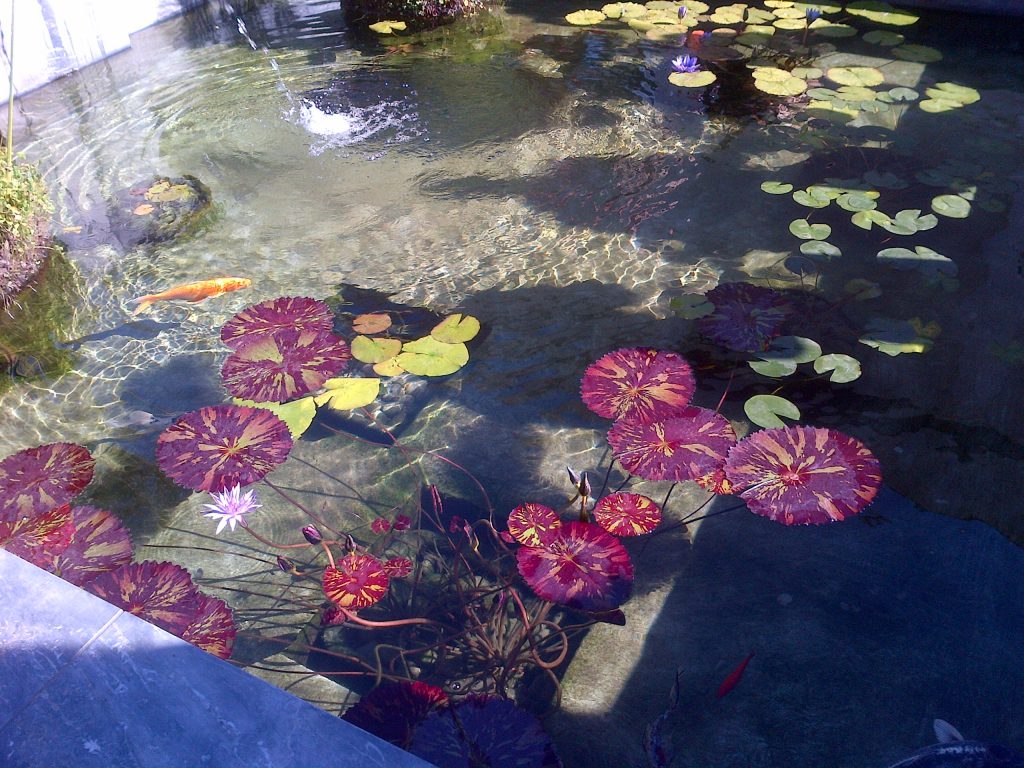
The architecture of the Villa is pristine, which makes it feel a little more like Las Vegas than Italy, but it’s still beautiful and we could have gazed all day at the columns and frescoes painted on the walls.
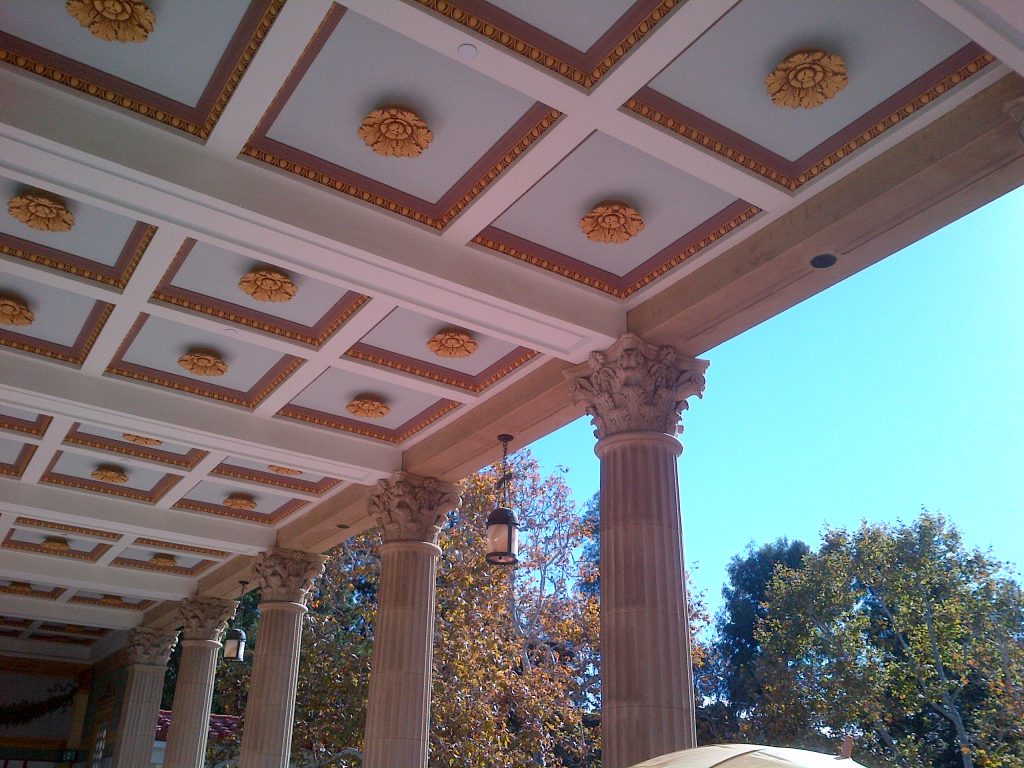
A strong theme ran through the garden tour: poisonous plants. As you may know, the Romans were adept at eliminating the competition through poisoning. Hellebore, oleander, and foxglove were used to wipe out many a leader in the Roman empire. Poisons were concocted to coat tips of arrows, or laced into the water supply to weaken entire villages to make conquering a breeze.
But mainly, gardens were a place of repose and contemplation. Water features like the one below were gathering places for families; a chance to be outdoors while still within the safety of the Villa walls.
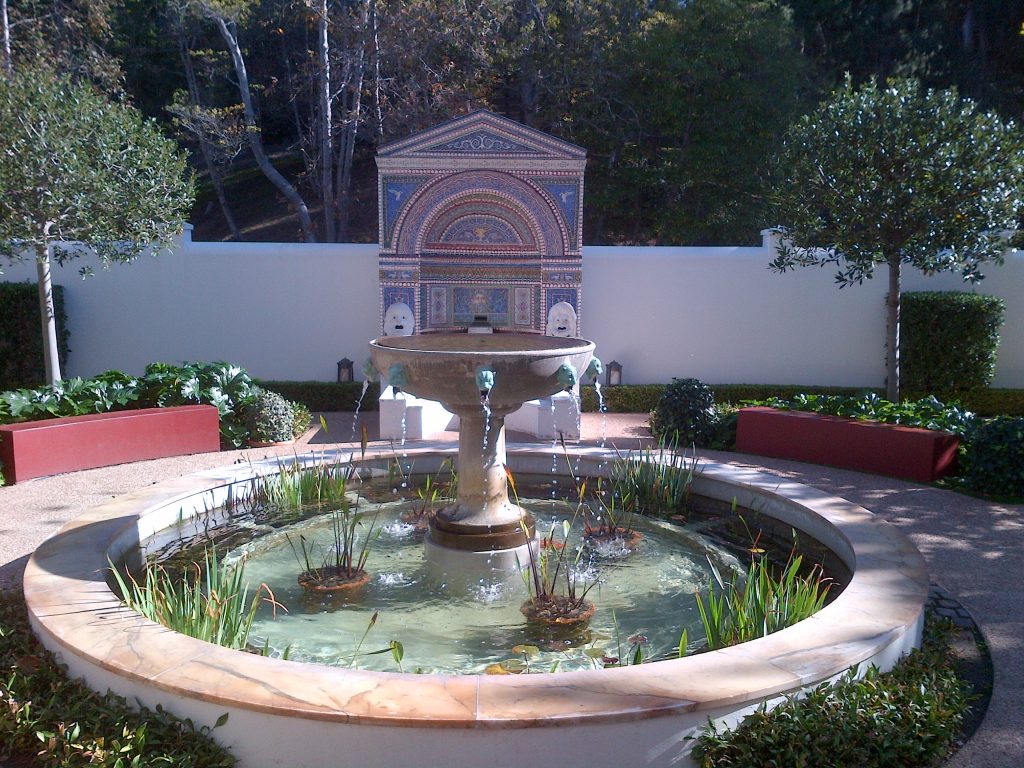
After the tour was complete, we ventured into the museum to look at sculptures and pottery dating back to 3,000 B.C. But that’s a story for another day. Off to the cafe!

